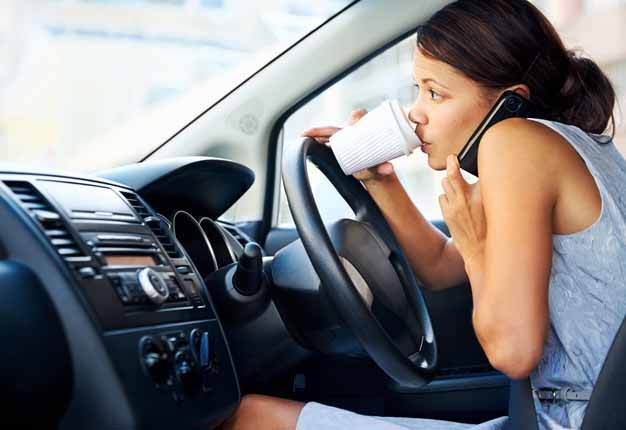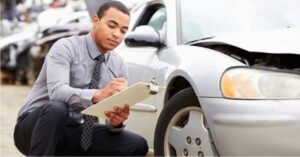Avoid these dangerous driving habits to stay safe on the road. It is anticipated that the demand on our roads system will increase 25 percent by 2025 and that road use capacity will only increase by 4 percent.
What these mean is that the roads are getting crowded everyday due to vehicular and human activities. We need well trained drivers who can make optimal user of the highways and help reduce deaths and property damages due to road crashes.
Dangerous driving habits are wrong drivers’ behaviours and actions that can pose dangers to your life and to other road users: (1.) driving under the influence of alcohol or drugs, (2.) sleeping or stressed driving, (3.) over speeding, (4.) driving too slow, (5.) distracted driving; like eating while driving, (6.) using cell phones, texting, or applying makeup while behind the wheel.
Dangerous driving habits also include (7.) driving without seatbelt, (8.) negligent driving, (9.) aggressive driving, (10) drag races, and road rages that you need to avoid as a professional driver. All bad driving habits can lead to fatal accidents. In this post, we are going to focus on reckless driving behavours and some defensive driving tips to help you.
#1. AGGRESSIVE DRIVING
Today’s drivers are becoming increasingly frustrated on roads. Rush hour traffic, the increasing number of construction sites (work zones) and traffic accidents are adding up to the driver’s frustration. The biggest culprits include the aggressive and reckless drivers.
Aggressive driving is a form of reckless driving habits that you need to avoid. Reckless driving is the driving of a motor vehicle in a manner that indicates a willful disregard for the safety of other people or their property.
Causes of aggressive driving include crowded roads; being in a hurry, bad roadwork; stress from other areas of life; dangerous driving attitudes; and selfishness.
A person may be guilty of aggressive driving if he does one of the following:
Common Aggressive Driving Habits
- Passing traffic lights with steady RED indication or stop signs.
- Overtaking and passing vehicles on the right.
- Changing lanes swiftly and carelessly.
- Following too closely (tailgating).
- Failing to yield the right-of-way.
- Exceeding the maximum speed limits.
How to Avoid Becoming an Aggressive Driver:
- Plan your journey ahead.
- Obey the posted speed limits.
- Identify alternative routes.
- Just be late when it’s already late.
- Be a courteous and patient driver.
How to Protect Yourself from Aggressive Drivers:
- Get out of the way and let an aggressive driver pass.
- Don’t challenge them.
- Avoid eye contact.
- Always be a courteous driver.
- Set an example for younger drivers and passengers.
#2. NEGLIGENT DRIVING
Other dangerous driving habits to avoid as a good driver include negligent driving, drag races, and road rage.
What is Negligent Driving?
Negligent driving is a bad driving habit of intentionally failing to provide a safe environment for other drivers and pedestrians.
It includes incidents where the term “accidental” may be used to describe the driving activities or events.
Driving on private property without the owner’s consent, and driving under the influence of drugs or alcohol are major examples of negligent driving.
A person is guilty of negligent driving if he or she drives a motor vehicle in careless or imprudent manners that endanger any property or the life of any individual.
The offence of negligent driving generally encompasses situations where an accident has occurred. Thus, a person must not drive a motor vehicle on a road negligently.
Negligent driving is defined as, “driving without observing the standard rules of the roads and paying little or no reasonable attention safety of others as expected of a prudent driver.
Common Examples of Negligent Driving
- Driving at excessive speed, respect to prevalent driving conditions.
- Driving so close to the car in front that you can’t see the road ahead.
- Failing to slow down or stop when you got dazzled by bright lights, particularly the headlights of the car in front.
- Not providing enough warning when changing lanes or directions.
- Failing to take care at intersections by reducing your speed or yielding to other road users.
How to Avoid Becoming a Negligent Driver:
- Obey the traffic laws and control signals
- Obey the posted speed limits.
- Give way to other vehicles and road users
- Be a courteous and patient driver.
- Learn safe driving techniques.
- Go for refresher or crash avoidance driving course.
It is a good idea to seek professional advice if you are charged with negligent driving, particularly if your driving resulted to death or if someone was badly hurt.
#3. DRAG RACING
On the basic level, drag racing is a type of motor racing in which automobiles or motorcycles compete, usually two at a time, to know who would be the first to cross a set finish line.
The first ever organized drag racing event was held in 1949 at the Goleta Air Base in California. Nevertheless, this kind of competitive driving habit has found it way in to our busy roadways.
Today, both drivers and motorcyclists are usually engaged in drag race in our streets and city highways without any consideration to the right-of-way law or the pedestrians’ crosswalks.
As a trained driver, you must not engage in any vehicular race, speed exhibition, or speed contest with anybody; including those commonly known as drag races on any public street, or highway.
Drag racing is a dangerous driving habit you must avoid. It can lead to fatal crash and serious injuries.
How to Protect Yourself from Drag Racing Drivers:
- Get out of the way and let a drag racing driver pass.
- Don’t challenge or compete with them.
- Don’t take any driving activity as a joke.
- Obey the posted speed limits.
- Always be a responsible driver.
#4. ROAD RAGE
The National Highway Traffic Safety Administration defines road rage as when a driver “commits moving traffic offenses so as to endanger other persons or property.
Like getting out of the car to fight, or when you experience an assault with a motor vehicle or other dangerous weapon by the operator or passenger of a motor vehicle; these are called road rage.
Road rage is defined as violent or visibly angry behaviour by a driver of a motor vehicle which can result in crashes or other incidents on the roadways.
Road rage is also called an extreme case of aggressive driving. The following are possible signs of road rage or aggressive driving and you should avoid them:
Common Examples of Road rage
- Generally aggressive driving behaviours
- Including cutting other drivers off
- sudden acceleration, braking, and closely tailgating
- Preventing other vehicles from merging or passing
- Hitting the horn or flashing lights
- Shouting obscenities, or threatening other drivers
- Angry hand gestures
- Intentionally causing a crash between vehicles
- Getting out of a vehicle in an attempt to start a confrontation
- Threatening to use or using a weapon
- Throwing objects from a moving vehicle
Ways to Avoid Road Rage
- Keep a cool head
- Avoid eye contact
- Never make obscene gestures
- Do not use your vehicle to intimidate others
- Get out of the left lane for other fast moving vehicles
- Do not drive when you feel frustrated or stressed out—if you do, remove yourself from the situation
- Never get behind the wheel if you are tired or irritable
- Avoid confrontation
- If you witness something you think is road rage, call the police and report the culprit
14 Rules to Reduce Road Rage and Aggressive Driving
- Always allow extra travel time
- Do not remain behind the wheel for more than three hours at a time
- Maintain an adequate distance from the vehicle in front of you so you will be able to stop in time to avoid a collision
- Always signal your intention when turning or changing lanes
- Always come to a full stop at red lights and stop signs.
- Do not run red or yellow lights.
- Let other drivers merge into traffic in an orderly fashion.
- Do not block the passing lane.
- Obey posted speed limits.
- Concentrate on your driving—not on your cell phone, music stereo, passengers, or other distractions.
- Use your horn sparingly, only to remind other drivers of your presence.
- Never engage in inappropriate behavior such as making faces or rude or obscene gestures.
- Extend common courtesy to other drivers at all times.
- All drivers must do their part in making driving a safer, less stressful and more pleasant experience.
- Imbibe defensive driving techniques.
#5. DEFENSIVE DRIVING TIPS TO HELP YOU
As a defensive driver, don’t trust the other driver to do what you think he or she should do or what you would do in that person’s place.
For example, if the person’s turn signal is flashing, don’t assume that the driver will make a turn. Again, don’t assume that every driver will stop when there is a stop sign or traffic light.
Some drivers deliberately “run” stop signs and traffic lights. This is dangerous at high speeds. Don’t try it!
Plan your journey ahead and decide what to do if the driver does not turn in the direction shown by the turn signal.
For instance, if you see an approaching vehicle start to pass or overtake you and you think that driver may not have enough room to get back in to the proper lane, slowdown for him/her and check the shoulder and nearby area. That way, you will know where you can go if necessary.
Always look as far ahead as you can. In this way, you may see trouble developing in front of the vehicle ahead of you that may cause drivers to swerve or stop suddenly.
You should constantly be thinking of an “escape route” as you drive. After a few weeks of practice, this will become your “second nature.” If a sudden emergency arises, you will have a plan of action ready.
If a collision seems inevitable, don’t panic. Try to steer your way out of it. Do anything to keep away from hitting another vehicle or object head-on; try to hit at an angle.
If you have a choice, running your vehicle into a ditch may be preferable to hitting another vehicle or pedestrian.
How to Avoid Being Hit from the Rear
Rear-end collisions are the most common kind of motor vehicle accidents.
As the driver of the vehicle being followed, here’s what to do to lessen the chances of being hit from the rear:
- Be sure your stop lights are clean and in working order.
- To be aware of what is going on behind you; check your rear view mirror periodically.
- Your back window must be clean.
- Outside mirrors are also helpful.
- Signal well in advance for stops, turns and lane changes.
- Always keep pace with the traffic; slowdown gradually, and not suddenly.
- If a vehicle follows too closely, slowdown and let it pass.
Wrapping up: Dangerous Driving Habits To Avoid
Now you know about the most important Dangerous Driving Habits to Avoid as a qualified driver?
We hope you would start to implement these safe driving tips to ensure your own safety and that of other road users like yourself?
Aggressive driving and road rage can take many forms, like tailgating, weaving, speeding or cutting other drivers off.
Some common factors that often contribute to road rage incidents or aggressive driving behavior include traffic delays, running behind one’s meeting or appointment time, or drivers’ general disregard for others and the law.
In whatever may be your case, always remember to do the right thing. Obey the rules of the roads and make driving a better experience for all.
Use your seat belt. Don’t drink and drive!




